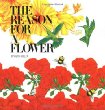Search Results: Returned 7 Results, Displaying Titles 1 - 7
-
-
-- Plant pollination2006, c2000., Primary, Schlessinger Media Call No: 571.8 2 Edition: Standard format. Availability:1 of 1 At Location(s) Series Title: Schlessinger science library. Plant life for childrenSummary Note: Uses microscopic photography and graphics to familiarize students with the parts of a flower, showing how flowers become pollinated, and examining the structure of seeds, their development, and dispersal.
-
-
2021., Pre-adolescent, Scholastic Focus Call No: ENVIORNMENT NF CHU Edition: 1st ed. Availability:1 of 1 At Location(s) Summary Note: "Thanks to humans, bumble bees are world travelers, spreading to countries that never hosted bumble bees before. For centuries these insects pollinated our crops. But are they pushing out native pollinators? Why are some species of bumble bees flourishing whereas others are floundering, to the point of possibly disappearing forever? . . . explores these questions and tells the tale of bumble bees' history with humans . . . highlights the interconnectedness of the two species, and touches on the topics of endangerment and extinction, the impact on human agriculture, bumble bee habitats and ecology, and the current crisis of bee protection"--Provided by publisher.
-
-
2015., Pre-adolescent, PowerKids Press Call No: 571.8 642 Edition: 1st ed. Availability:1 of 1 At Location(s) Series Title: World of plants (New York, N.Y.)Summary Note: Explores the ways different animals, including insects and birds, help pollinate plants to help them reproduce.
-
-
c1983., Grosset & Dunlap Call No: 582 HEL Availability:1 of 1 At Location(s) Summary Note: Brief text and lavish illustrations explain plant reproduction and the purpose of a flower and present some plants which don't seem to be flowers but are.
-
-
c1983., Juvenile, Grosset & Dunlap Call No: ENF 582 Hel Availability:1 of 1 At Location(s) Summary Note: Brief text and lavish illustrations explain plant reproduction and the purpose of a flower and present some plants which don't seem to be flowers but are.
-
-
c2012., Rourke Classroom Call No: [E] Availability:1 of 1 At Location(s) Series Title: My science librarySummary Note: Simple text and photographs introduce the concepts of seeds, bees, and pollen and how they contribute to the reproduction of different types of plants.
-
-
-- Pollinators in crisis[2020]., Twenty-First Century Books Call No: HI-INT 595.79 HIR Availability:1 of 1 At Location(s) Summary Note: "Apples, blueberries, peppers, cucumbers, coffee, and vanilla. Do you like to eat and drink? Then you might want to thank a bee. Bees pollinate 75 percent of the fruits, vegetables, and nuts grown in the United States. Around the world, bees pollinate $24 billion worth of crops each year. Without bees, humans would face a drastically reduced diet. We need bees to grow the foods that keep us healthy. But numbers of bees are falling, and that has scientists alarmed. What's causing the decline? Diseases, pesticides, climate change, and loss of habitat are all threatening bee populations. Some bee species teeter on the brink of extinction. Learn about the many bee species on Earth--their nests, their colonies, their life cycles, and their vital connection to flowering plants. Most importantly, find out how you can help these important pollinators"--From the publisher's web site.








